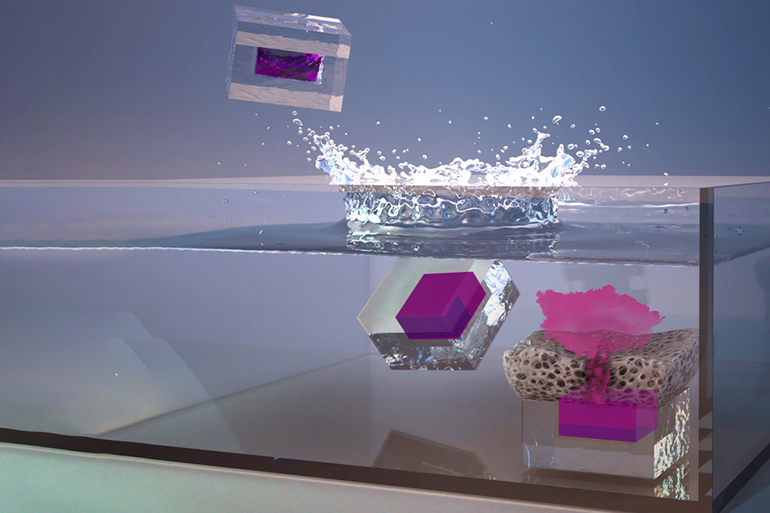Researchers at MIT have created a microparticle vaccine that can provide booster doses automatically. The hollow microparticles resemble a coffee cup with a lid, and are made using poly(lactic-co-glycolic acid), otherwise known as PLGA. The polymer breaks down over time in the body, releasing the contents of the hollow particles. By changing the composition of the polymer and the chemical groups attached to it, the researchers can tweak the release time, allowing them to deliver an assortment of particles that release at different times.
This would allow them to deliver the particles subcutaneously, and then as the particles break down the recipient would receive their initial dose and then booster doses at later dates. The technology could help to provide long-term immunity without the need to attend a clinic on multiple occasions and could help with the logistics of large-scale vaccination campaigns, such as those initiated during the COVID-19 pandemic.
Vaccines are a cornerstone of public health initiatives, and have helped us to avoid the worst effects of many serious diseases and even eradicate certain diseases, such as smallpox. During the COVID-19 pandemic, vaccines have provided some much-needed protection from the worst effects of the SARS-CoV-2 virus. However, the need to receive multiple doses of the vaccine, along with follow-up boosters, is a sticking point in terms of logistics. Missed appointments for second doses are always a possibility, and it would be easier (and likely cheaper) to just use a one-dose system.
This technology aims to achieve this, with booster doses becoming available within a vaccine recipient’s tissue over time. “This is a platform that can be broadly applicable to all types of vaccines, including recombinant protein-based vaccines, DNA-based vaccines, even RNA-based vaccines,” said Ana Jaklenec, one of the lead researchers that created the new technology. “Understanding the process of how the vaccines are released, which is what we described in this paper, has allowed us to work on formulations that address some of the instability that could be induced over time.”
To create the particles, the researchers use silicone molds to form the “cup” shape out of the polymer mixture, and then fill the hollow structures with the vaccine. They then apply a polymer “lid” and heat the particles slightly to fuse the lid and cup together, sealing the vaccine inside. The researchers can tweak the release profile of the particles by using polymers with slightly different chemical properties. “If you want the particle to release after six months for a certain application, we use the corresponding polymer, or if we want it to release after two days, we use another polymer,” said Morteza Sarmadi, another researcher involved in the study. “A broad range of applications can benefit from this observation.”
Studies in Science Advances: Experimental and computational understanding of pulsatile release mechanism from biodegradable core-shell microparticles
Via: WITH
